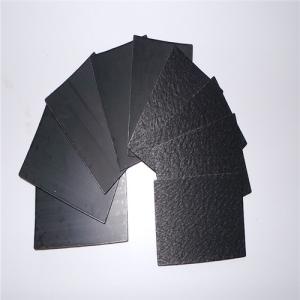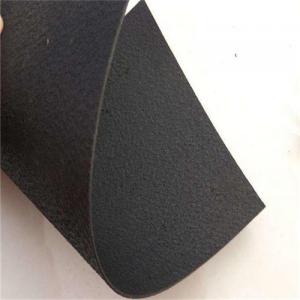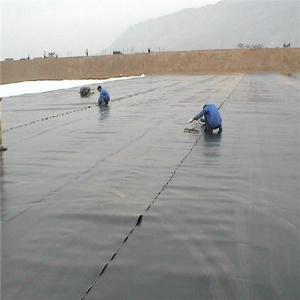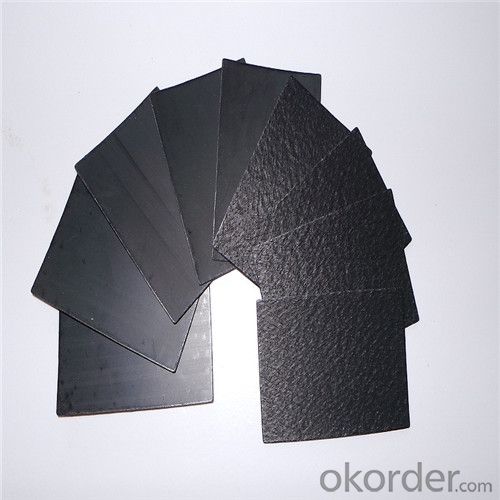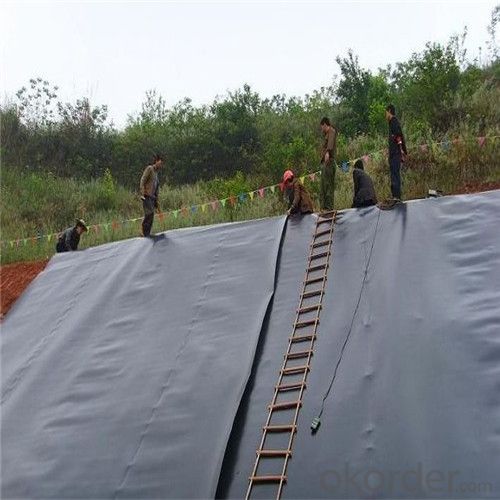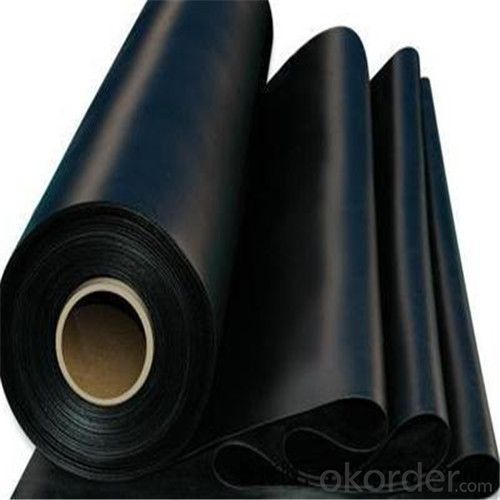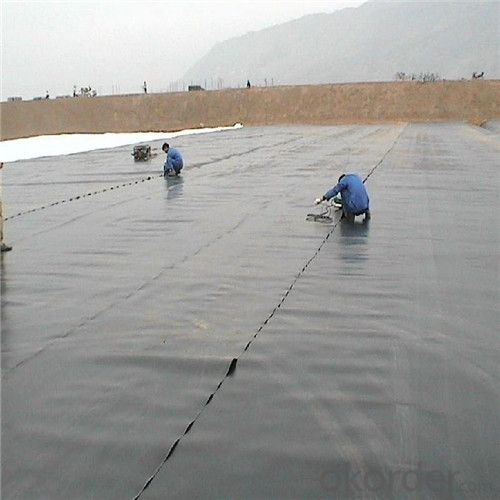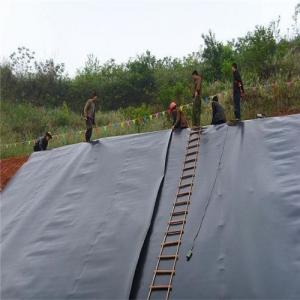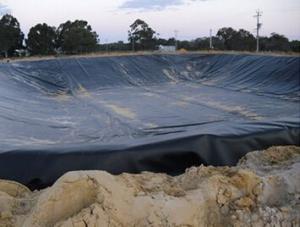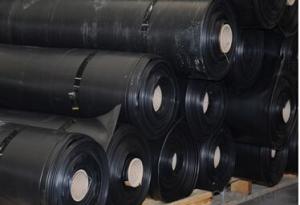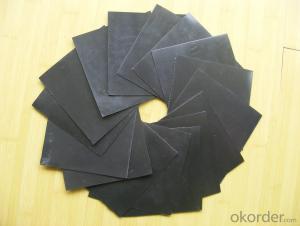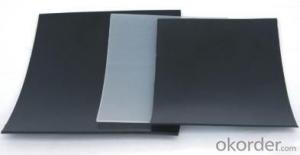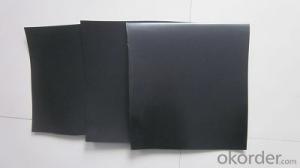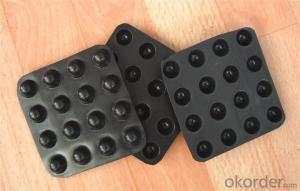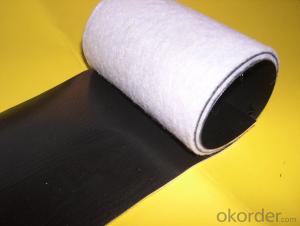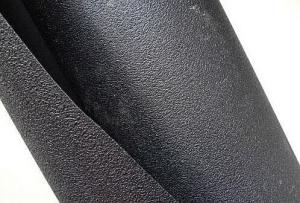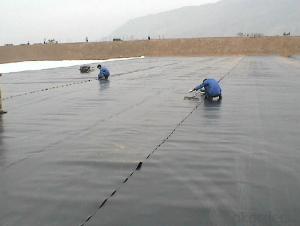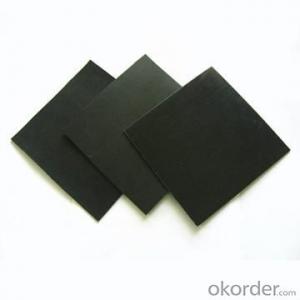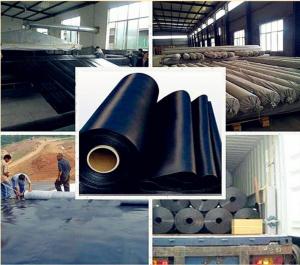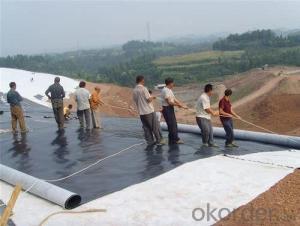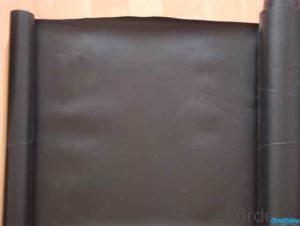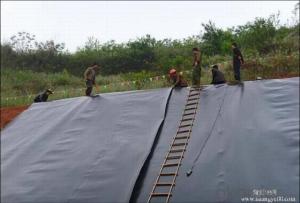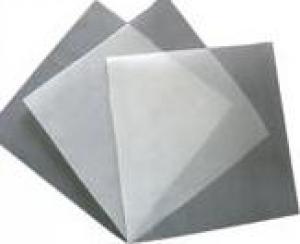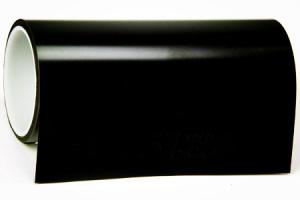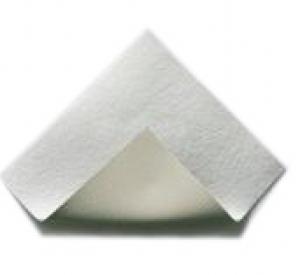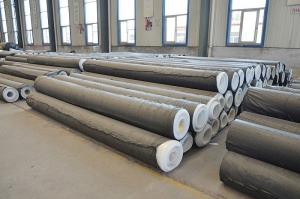HDPE Geomembrane Liner for Aquaponics Construction
- Loading Port:
- China main port
- Payment Terms:
- TT or LC
- Min Order Qty:
- 2000 m²
- Supply Capability:
- 1000000 m²/month
OKorder Service Pledge
OKorder Financial Service
You Might Also Like
Specification
Geomembrane Description
Geomembrane is made from high grade polyethylene raw material, adding carbon black, antioxidant, antiaging and UV-resistance component.
It uses the first class automatic production equipment and three-layer pressing technology. All products are in accordance with GB, GRI and ASTM test standard.
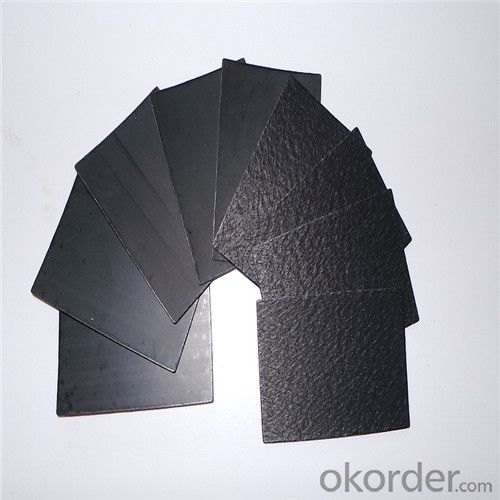
Geomembrane Specification
Thickness: 0.75mm-3.0mm
Width: 2m-12m
Color: grey, as request
Material: HDPE, LDPE, LLDPE
Type: smooth, textured
Geomembrane Property
1) Excellent environmental stress cracking resistance property.
2) Low temperature resistance, corrosion resistance, aging resistance.
3) For service temperature range: -60℃ - +60℃.
4) Service valid term: 60 years at least.
5) Anti-crack, dimensional stability, anti-aging, smooth appearance, high friction coefficient
Geomembrane Application
1) Municipal environmental projects, water conservancy projects.
2) Landfill cap, mining heap leach pads.
3) Pond liner, canal linings, tank linings, raw water treatment reservoirs, retention ponds.
4) Waste water treatment lagoon, secondary containment.
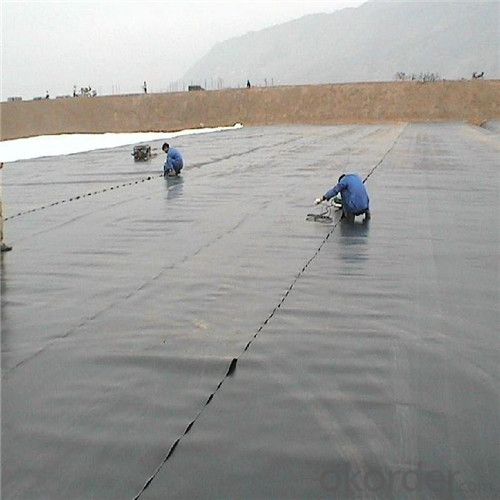
- Q: Anti seepage coefficient of PE geomembrane
- Less than 10^-10cm/s
- Q: Are geomembranes resistant to oxidation?
- Yes, geomembranes are generally resistant to oxidation due to their composition and material properties. They are designed to withstand exposure to oxidative substances and environmental conditions, making them a reliable choice for various applications that require protection against oxidation.
- Q: Are geomembranes resistant to hydraulic pressure?
- Yes, geomembranes are designed to be resistant to hydraulic pressure. They are composed of impermeable materials that can withstand the forces exerted by liquids, making them suitable for applications where containment and fluid control are required.
- Q: Can geomembranes be used for waterproofing?
- Yes, geomembranes can be used for waterproofing. They are impermeable membranes made from synthetic materials that are designed to prevent the passage of water. Geomembranes are commonly used in various applications such as lining ponds, landfills, and tanks to effectively waterproof and control water flow.
- Q: Can geomembranes be used for wastewater ponds?
- Yes, geomembranes can be used for wastewater ponds. They are commonly used as liners in the construction of wastewater ponds to prevent leakage and contamination of the surrounding environment. Geomembranes provide a strong barrier against the seepage of liquids, including wastewater, making them an effective choice for containing and managing wastewater in ponds.
- Q: What are the installation requirements for geomembranes in landfill closure systems?
- The installation requirements for geomembranes in landfill closure systems typically include proper site preparation, compaction of the subgrade, and installation of a low-permeability barrier such as a geomembrane liner. The geomembrane should be properly anchored and overlapped to prevent leakage and ensure its integrity. Additionally, proper inspection, testing, and quality control measures are necessary during installation to ensure compliance with regulatory guidelines and long-term performance of the landfill closure system.
- Q: What if there is water during construction of geomembrane?
- The main role of geomembrane on the road is water insulation, the part higher than the underground water level is isolated by geomembrane, and then backfill and grind, preventing the water through soil capillarity from soaking roadbed filler.
- Q: What is calculation method of constructional column concrete project quantity ?
- project quantity of external wall strip foundation =length of center line of external wall strip foundation × sectional area of ??strip foundation. project quantity of interior wall strip foundation = length of clear line of interior wall strip foundation × sectional area of ??strip foundation. note: Calculation of clear line① calculate brick strip foundation according to interior wall clear line. Calculation of constructional column project quantity ① constructional column volume = constructional column volume + stubble template. area of stubble template = length of stubble into wall (0.03) * height of constructional column ⑵, difficulties in calculation of constructional column project quantity ①, It is difficult to calculate the stubble of constructional column and you must consider how many walls the pillars cross with. ②, It is also difficult to calculate the template volume.
- Q: How do geomembranes perform in high altitude areas?
- Geomembranes perform well in high altitude areas as they are designed to withstand extreme conditions such as low temperatures, high UV radiation, and strong winds. The materials used in geomembranes are typically highly durable and resistant to degradation, ensuring long-term performance even at higher altitudes. Additionally, geomembranes are impermeable, providing effective containment and protection against water and chemical leakage, which is crucial in high-altitude environments where water scarcity and environmental protection are of utmost importance.
Send your message to us
HDPE Geomembrane Liner for Aquaponics Construction
- Loading Port:
- China main port
- Payment Terms:
- TT or LC
- Min Order Qty:
- 2000 m²
- Supply Capability:
- 1000000 m²/month
OKorder Service Pledge
OKorder Financial Service
Similar products
Hot products
Hot Searches
Related keywords
